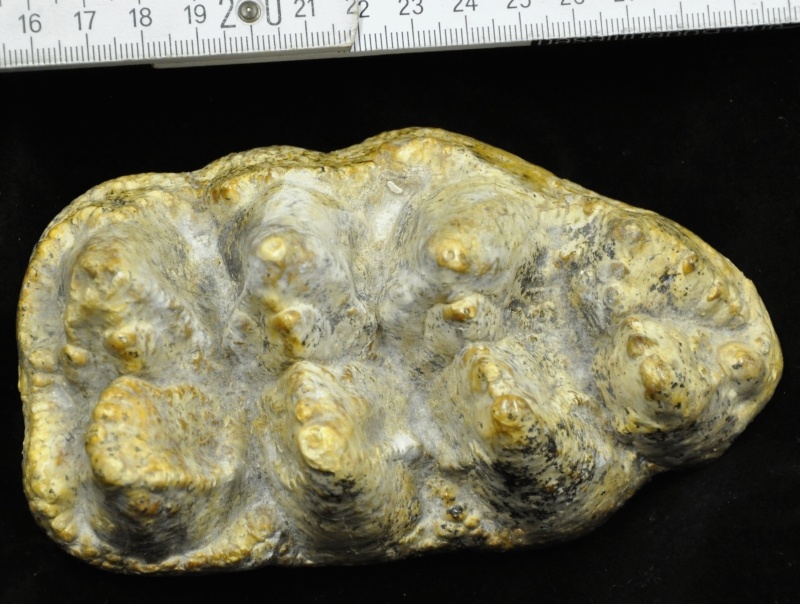Dies ist der 2. Backenzahn des Rüsseltieres Zygolophodon turicensis SCHINZ.
Zygolophodon ist der Vorfahre der amerikanischen Gattung Mammut, aber nicht des Mammuts (Gattung Mammuthus!). Die Gattung entstand in Afrika und wanderte im frühen Miozän nach Europa ein, wo sie bis ins untere Obermiozän (10 Mio Jahre) auftrat. Sie besaß vier Stoßzähne, also jeweils zwei umgebildete Schneidezähne im Ober- und Unterkiefer. Die Backenzähne hatten steilwandige Höcker (hier gut erkennbar), die sich zum Zerscheren von Blättern gut eigneten.
Die am häufigsten überlieferten Reste von Elefanten sind wegen des mehrfachen Zahnwechsels und wegen ihrer Widerstandsfähigkeit die Backenzähne. Mit ihrer Hilfe lässt sich die Evolution der Familie sehr gut rekonstruieren.
Alter: ca. 10 Mio. Jahre, Tortonium, Miozän
Fundort: Grube Gaul 4 km NW Sprendlingen b. Bad Kreuznach, Kr. Mainz-Bingen/Rheinland-Pfalz
en

